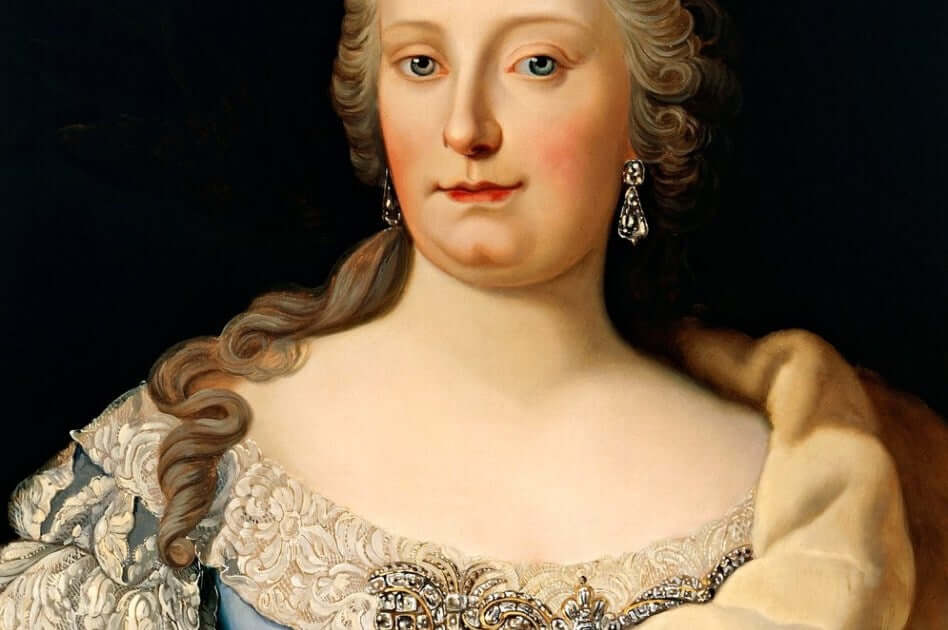
Wear at Your Own Risk – Cursed Gemstones Throughout History Part 5
Wear at Your Own Risk – Cursed Gemstones Throughout History Part 5
The world of gemstones is filled with dazzling treasures, but some come with histories steeped in intrigue, betrayal, and tragedy. Among them, the Sancy Diamond and the Florentine Diamond stand out not only for their extraordinary beauty but also for the legends of misfortune that follow them. These two famous gems, both of Indian origin, made their way through the courts of Europe, adorning the crowns of kings, emperors, and noble families. Yet, despite their brilliance, their owners often met tragic ends—whether through assassination, exile, or the downfall of entire dynasties. The Sancy, a 55.23-carat pale yellow diamond, and the Florentine, a lost 137.27-carat masterpiece, are linked to some of history’s most dramatic events.
The Sancy Diamond
The Sancy Diamond, with its pale yellow hue and flawless cut, has an allure that’s hard to resist. It is a shield-shaped diamond weighing approximately 55.23 carats. Its cut is unusual, employing a double rose cut with no pavilion (the lower part of the diamond), which was innovative for its time. However, behind its dazzling brilliance lies a dark history of mystery, betrayal, and death. Once worn by kings and queens, this rare gemstone has earned a reputation for its beauty and the string of misfortunes that followed its owners, making it one of history’s most cursed diamonds.
The exact origin of the Sancy Diamond is somewhat shrouded in mystery, though most historians agree that it was discovered in India. Like many of the world’s most famous diamonds, the Sancy likely came from the Golconda mines, a region known for producing some of history’s finest and most storied diamonds, including the Koh-i-Noor and the Hope Diamond.
 Charles the Bold By Rogier van der Weyden. Image Wikimedia
Charles the Bold By Rogier van der Weyden. Image Wikimedia
The Sancy’s bloody legacy began when it was first brought to Europe in the late 15th century by a French nobleman named Nicolas de Harlay, Seigneur de Sancy. This is where the curse begins to take shape. According to legend, the diamond was initially part of the treasury of Charles the Bold, Duke of Burgundy. Charles, a powerful and ambitious ruler, wore the diamond into battle as a talisman, believing it would protect him from harm. However, the Duke’s faith in the Sancy proved fatal.
In 1477, during the Battle of Nancy, Charles was killed, and his body was found stripped of all valuables, including the diamond. This marked the beginning of the gemstone’s deadly reputation. Following Charles’ death, the Sancy passed through the hands of various European monarchs, bringing misfortune to nearly all who owned it.
After Charles the Bold’s death, the diamond vanished for several decades before reappearing in the possession of Nicolas de Harlay, Seigneur de Sancy, from whom it gets its name. Sancy was a French diplomat and financier who served under King Henry III of France. Despite his power and wealth, Sancy’s ownership of the diamond was not without its troubles.
One of the most notable stories surrounding the Sancy during this time involves a courier tasked with delivering the diamond to Henry IV, who sought to purchase it to finance his wars. The courier was attacked and killed on the journey, and the diamond disappeared again. However, legend claims that Sancy, refusing to believe the gem had been stolen, sent out a search party. They eventually found the body of the courier and, upon examination, discovered that he had swallowed the diamond to protect it. The Sancy was recovered from within his stomach, but the eerie death of the courier added yet another layer to the gem’s dark history.
 Portrait of Maria de’ Medici in full regalia by Frans Pourbus the Younger. Image: Wikimedia
Portrait of Maria de’ Medici in full regalia by Frans Pourbus the Younger. Image: Wikimedia
After this macabre incident, King Henry IV of France became the next notable owner of the Sancy Diamond. However, Henry IV was assassinated in 1610, his violent death adding to the legend of the cursed gem. The Sancy’s reputation continued to grow as a bearer of ill fate.
Following Henry IV’s assassination, the Sancy Diamond once again changed hands, this time crossing the English Channel. In the early 17th century, it was sold to King James I of England. His son, Charles I, wore the diamond and was famously executed during the English Civil War in 1649. Thus, the Sancy Diamond had claimed yet another royal victim.
After Charles I’s death, the diamond briefly passed into the possession of his son, Charles II, who struggled to regain the throne after his father’s execution. His reign was marked by political instability, exile, and the Great Plague of London in 1665, followed by the Great Fire of London in 1666. Although Charles II ultimately restored the monarchy, his life was fraught with turmoil, and the curse of the Sancy seemed to follow him.
By the late 18th century, the Sancy Diamond had returned to French royal hands, becoming a part of the French Crown Jewels. It was worn by Louis XVI and his queen, Marie Antoinette, both of whom were executed during the French Revolution in 1793. Some saw the violent deaths of the royal couple as the final curse of the Sancy Diamond upon its owners.
During the chaos of the French Revolution, the Sancy Diamond, along with much of the French Crown Jewels, was stolen in a daring robbery in 1792. While many of the jewels were eventually recovered, the Sancy remained missing for many years, disappearing from public view as it had so many times before.

Nancy, Viscountess Astor, wearing Cartier Astor Tiara: Image: Public domain, via Wikimedia Commons.
After disappearing for much of the 19th century, the Sancy resurfaced in the hands of the Astor family, one of America’s wealthiest families. In 1906, William Waldorf Astor purchased the diamond and passed it down through his descendants. It remained in the family until the 1970s, when it was sold to the Louvre Museum, where it remains.

Photo of the Florentine diamond in the late 1800s. Image: Public domain, via Wikimedia Commons.
The Florentine Diamond
Few gemstones have carried as much intrigue and tragedy as the Florentine Diamond. This pale yellow, 137.27-carat diamond was once one of Europe’s largest and most famous gems, adorning the crowns of emperors and kings. Yet, despite its beauty and prominence, the Florentine Diamond is shrouded in a mysterious legend of misfortune and betrayal. Today, the diamond is lost—its whereabouts unknown for more than a century—fueling speculation about the curse said to follow those who possess it.
Like many of history’s most famous diamonds, the Florentine Diamond is believed to have originated in India, specifically in the Golconda mines, which are renowned for producing large and extraordinary diamonds, although its early history remains unclear, the diamond’s first confirmed appearance in European records dates back to the late 15th century.
The Florentine is sometimes called the Tuscany Diamond, as it became part of the Grand Ducal collection of Tuscany in Italy. Its beautiful pale-yellow hue, combined with a complex nine-sided, 126-faceted cut, made it one of the most stunning diamonds of its era. Yet, despite its beauty, the diamond’s history would soon be intertwined with a series of tragic events and political upheavals.
One of the first and most enduring legends surrounding the Florentine Diamond is its connection to Charles the Bold, Duke of Burgundy. According to legend, Charles originally owned the diamond and adorned his armor with it in battle. In 1477, during the Battle of Nancy, Charles was killed, and the Florentine Diamond was lost amid the chaos of war. Legend has it that the diamond was picked up from the battlefield by a Swiss soldier who had no idea of its value. He allegedly sold it for a paltry sum, unaware of the extraordinary treasure he had in his possession.
This tale of battlefield loss and recovery contributed to the early mystique of the Florentine Diamond. Still, it wasn’t until the gem found its way into the hands of European royalty that it genuinely began to earn its reputation as a cursed stone.
The diamond eventually came into the possession of the powerful Medici family of Florence, Italy, one of the most influential dynasties of the Renaissance. It became a prized jewel in the collection of the Grand Dukes of Tuscany. However, during the Medici reign, the Florentine Diamond’s curse seemed to take hold.
Francesco I de’ Medici, Grand Duke of Tuscany, was known for his love of art and science. Despite his wealth and power, his reign was marred by personal misfortune. He died under suspicious circumstances in 1587, some say poisoned by his brother, Cardinal Ferdinando I de’ Medici, who succeeded him. This period of intrigue and betrayal fueled the diamond’s growing reputation as a bringer of bad luck.
Following the fall of the Medici dynasty, the Florentine Diamond passed into the hands of the Habsburg family, one of the most influential royal houses in Europe. The diamond was inherited by Francis Stephen of Lorraine, who married Maria Theresa of Austria, the formidable Habsburg empress. The Austrian imperial family then wore the diamond, further cementing its status as a symbol of wealth and power.

Portrait of Maria Theresa of Austria by Martin van Meytens. Public domain, via Wikimedia Commons
While the Florentine Diamond remained with the Habsburgs for over a century, its curse seemed to follow them. The decline of the Habsburg monarchy was swift and brutal. In 1916, Emperor Franz Joseph I of Austria died, and his grand-nephew, Karl I, ascended to the throne. However, Karl I’s reign was short-lived. The aftermath of World War I saw the collapse of the Austro-Hungarian Empire, and Karl was forced to abdicate in 1918, ending the centuries-old monarchy.
During this time of upheaval, the Florentine Diamond disappeared. After his abdication, Karl and his family fled Austria for Switzerland, taking several imperial jewels, including the Florentine Diamond. From there, the diamond’s fate became murky. Some reports suggest it was smuggled into South America, while others claim it was stolen during Karl’s exile. There are also theories that it was recut and sold on the black market, and its original identity was erased forever.
Despite numerous attempts by historians, treasure hunters, and diamond enthusiasts to trace its whereabouts, the Florentine Diamond remains lost, its final fate a mystery. Its disappearance only deepened the legend of the diamond’s curse, with many believing that the misfortune that plagued its owners was tied to its eventual vanishing.
Legends of Cursed Diamonds—Truth or Superstition?
The fates of the Sancy and Florentine Diamonds remain shrouded in mystery. The Sancy, now safely housed in the Louvre, no longer seems to bring misfortune, but its past remains one of betrayal and bloodshed. On the other hand, the Florentine has vanished without a trace, its whereabouts unknown for over a century—perhaps lost forever or possibly hidden away, waiting for its curse to resurface. Whether one believes in the supernatural or attributes the tragedies surrounding these stones to the volatile nature of history, the stories of the Sancy and Florentine Diamonds continue to captivate. Their legacies remind us that wealth and power often come at a significant cost and that even the most magnificent gems may carry secrets far darker than their brilliant sparkle suggests.





